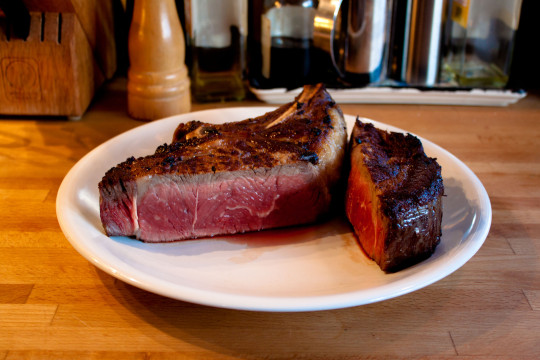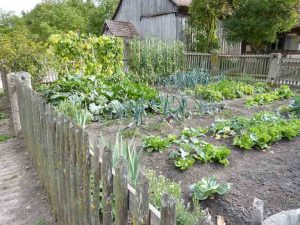 Dry aging is a retro art form, from the simpler days of local butcher shops, poodle skirts and soda fountains. So naturally in our quest to revive the art of the neighborhood butcher, we’ve brought back dry-aged beef and made it available for everyone from, the adventurous chef to the inquisitive foodie.
Dry aging is a retro art form, from the simpler days of local butcher shops, poodle skirts and soda fountains. So naturally in our quest to revive the art of the neighborhood butcher, we’ve brought back dry-aged beef and made it available for everyone from, the adventurous chef to the inquisitive foodie.
In the 1960s, meat producers began “wet aging” beef, a process that does not result in the same buttery tenderness and rich beef flavor. Nowadays, real dry-aged steaks are often only found in high-end restaurants and select butcher shops. Lucky for you, we’ve brought this artisan process to your neighborhood butcher & grocer so that you too can experience the supreme flavor of dry-aged beef.
Process
The dry aging process for our meats begins with the finest premium loins, wrapped in cheese cloth and hung in a climate and humidity controlled room between 36 degrees and freezing. These cuts must be well marbled in order to ensure proper aging. While traditional dry aging takes 7-21 days, our dry-aged beef is aged for a minimum of 21 days and up to 45 days. During this process, enzymes break down and tenderize the meat and a bacterial crust forms on the outside of the cut. Before cutting for a customer, this layer is trimmed away, leaving a tender steak with super enhanced beef flavor. During drying, the beef’s juices are absorbed into the meat, reducing the weight by about 25-30 percent, but saturating the beef with flavor and tenderizing the cut.
Our Offerings
At The Meat House we offer at least three different kinds of dry-aged beef.

- T-Bone and Porterhouse Steaks
- Cowboy Steaks
- Sirloin Strip Steak
Seasoning & Cooking
Because of the dry-aged steak’s concentrated flavor, simple herb rubs or marinades are the best way to bring out the best in your dry-aged steak. Heavy sauces and bolder spice mixes will drown out the natural complexities in these great cuts of beef.
We recommend cooking your dry-aged steak for 25 – 35 percent less time than a normal steak. This is because of the decreased amount of moisture in the steak. Also, use a meat thermometer to ensure proper doneness (130-135 degrees for medium rare, 140-145 for medium). The specific cut and thickness will also change the amount of time required.
Pairing
Because of the rich, buttery flavor of dry-aged steaks, they are best paired with full-bodied red wines. Wine connoisseurs and rookies alike will agree that their favorite Merlot, Cabernet Sauvignon, Pinot Noir or Bordeaux complement these steaks’ bolder flavors.
Dry aging takes a great deal of time, knowledge and precision, but the end result is considered the best among steak connoisseurs. We must warn you that these retro cuts of meat have been known to bring about that “good ol’ days” feeling and leave you with a hankering for a chocolate milkshake and a night out at the drive-in…





Comments